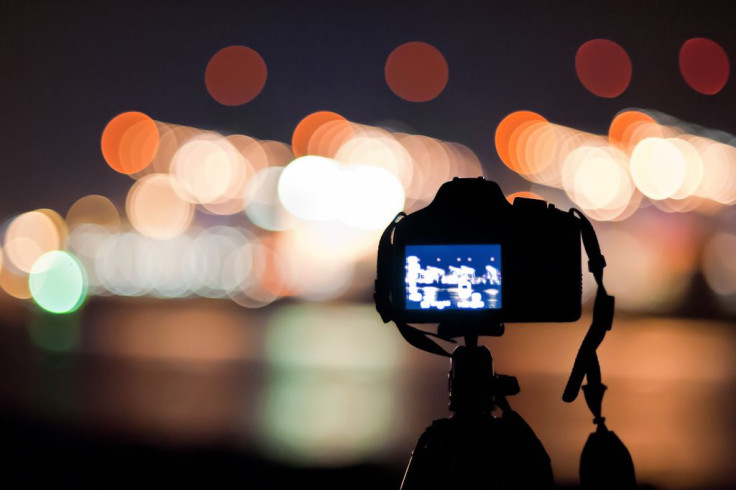Subtle Distractions Divert Our Focus More Than Obvious Ones: Study

Ever notice that the little things tend to distract us more than greater disturbances? For instance, while you’re working, have you ever gotten preoccupied by the clicking sound of keys, or the subtle hum of a computer, but listening to music on a relatively high volume while working does nothing to perturb your actions? Well, researchers at Brown University have found that subtle distractors are often more effective in deterring us from our objective than greater, more overt distractors. Publishing their findings in Current Biology, researchers came about this conclusion completely by mistake.
Assistant professor of Brown’s Department of Cognitive, Linguistic and Psychological Sciences Joo-Hyun Song and a team of researchers worked together on a study they believed would produce straightforward results. Using a computer program to measure a participants actions, researchers believed that when participants were asked to reach for certain objects on their computer screens, their fingers would veer from their target when presented with a significant, visual distraction. However, researchers found the opposite. When presented with more minor distractions, participants’ fingers tender to stray more toward these small disturbances, rather than the larger ones.
These results boggled researchers, who did not believe they would find lesser distractors to have such a dramatic influence on our focus. “It’s a new discovery,” said Song in a recent press release. “We are figuring out a new phenomenon.”
Initially, Song along with colleagues Jeff Moher of Williams College and Brian Anderson of John Hopkins, sought to study how various distractions affect our actions based on their perception of being rewarding. They hoped that by shedding light on how our mind is distracted by perceptions of reward in habits like smoking and drinking, they could possibly find solutions to change these habits.
As stated previously, the original test involved a computer program, and a device that tracks finger movement during the computer game. Participants were told that within the game, reaching toward one type of circle, in this case the green circle, would yield a lower reward of two cents, while another type of circle, like the red one, would amount to 10 cents. They were then given the objective to reach for diamonds that appeared on the screen that varied in color from gray, to green or red.
Researchers believed that the red circle would trigger more hand movements away from the diamond targets than green circles because they were specified to have a greater reward. However, reaching for green circles of lesser value represented a higher deviation from the participant’s intended path toward the diamonds.
Because of this, researchers decided to redirect their experiments and start a chain of other studies. They recruited a variety of different volunteers, equaling 93 total. Within these new experiments, researchers discovered an interesting dichotomy; greater distractions tend to affect our perceptions of things more than lesser distractions, but lesser distractions have a more hindering effect on our actions.
In one of the experiments, researchers informed participants of the same reward system associated with green and red circles as they did in the first. However, the objective of the game was changed. Participants were asked to perceive the orientation of a line, and indicate whether it was horizontal or vertical, amid the distractions of both the green and red circles. What they found was that perceptions of the direction of the line (i.e., whether it was horizontal or vertical) was more greatly skewed by the distraction of red circles indicating higher reward, than the green circles.
Researchers conducted two more experiments, this time taking away the reward system and replacing it with distractions based on colors. All objects within the computer game presented to subjects were typically red, aside from random distractors that were either pink, a color very close to red, or blue, a color completely different than red. Overall, when researchers measured the reach of participants while playing the game, the subtly distracting pink shapes presented the greatest deviation from targets than the more obviously distracting blue shapes. When color reward was changed for color, action was still more greatly affected by subtle distractions, while accuracy of perception was only compromised in the presence of great distractions.
So what does all of this mean? Researchers are still currently trying to figure it out, but they have some ideas. One hypothesis by the team is that our brains have a suppression mechanism that keeps on task by tuning out bigger distractions. However, this filter seems to only work with these greater distractions, and smaller distractions seem to slip through the cracks because our brain has a more difficult time assessing them. Researchers also believe, in line with this theory, that the brain simply cannot handle every stimulus that comes its way, and only prioritizes the biggest distractions.
As far as why degrees of distraction affect our perception and actions differently, researchers hope to look into that more. They believe that one of the reasons why perception is more easily affected by more obvious distractors is because changing the course of actions tend to be a higher stakes risk, so the brain will manage greater distractions more acutely in this context.
“Action may be more important,” Song said. “So if you fail to inhibit strong distractions, then the consequences for yourself could be much bigger.”
Ultimately, researchers are excited to delve deeper into this topic, which is still puzzling their initial thoughts.
Source: Song JH, Anderson B, Moher J, et al. Current Biology. 2015.



























